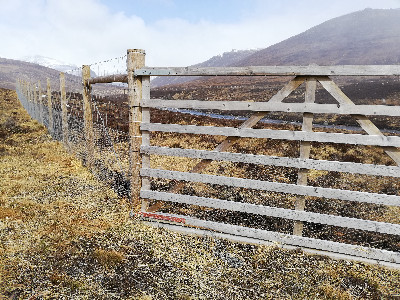
Some cairns have historical significance or are important landmarks. Some recent ones are an unnecessary and potentially misleading intrusion on the natural landscape.
Building new cairns can exacerbate erosion and should be avoided.
Do not destroy a cairn unless you have consulted the landowner or discussed your intentions with the mountaineering community.
Contact us if you have any concerns about the location of a particular cairn with a grid reference and photo.

Boundaries such as dry stone walls are traditional structures and easily damaged. Fences are not usually erected to keep people out but to control the movement of wild animals and livestock for conservation or farming:
Climbing over boundaries may damage them so make an effort to find nearby stiles or gates.
If you need to cross a fence, make sure you do so near to fence posts or where the wall looks strongest.
Leave gates as you find them or as signs instruct, open or closed.
Contact us if you believe the location of a locked gate or fencing is an unreasonable restriction on your access rights. Provide a grid reference and photo.
There are many historical monuments and archaeological sites in the hills which are important for what they can tell us about the past. They may not be obvious and have a fairly natural appearance if they have become grassed over.
Leave any stones, walls or other structures as you find them, without disturbing or damaging them.
Digging, lighting fires or otherwise disturbing the ground can damage cultural heritage features.
Follow any reasonable local guidance aimed at preventing damage to a site.
While we sympathise with the grief and loss that bereaved friends and relatives feel, we believe that permanent memorial artefacts should not be a feature of the mountain landscape.
Many mountaineers are requesting in their wills that they would like their ashes scattered on the summit of their favourite mountain when they die. This may have some environmental advantages, but it can also do harm, with some popular mountain summits used repeatedly for the scattering of ashes showing phosphate enrichment and changes in the acidity or alkalinity, which affects summit vegetation.
Read more about advice on memorials and scattering of ashes.